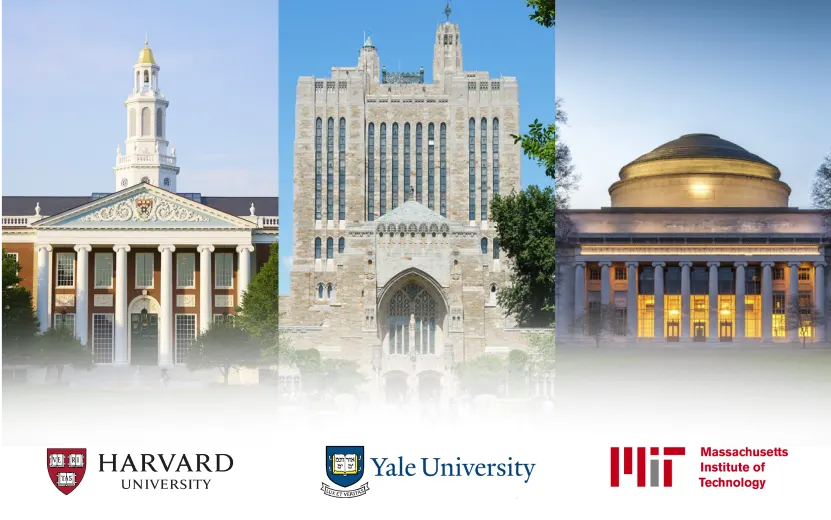16 December 2024
4 minutes read
Tier 2 Universities in the USA for MS

The landscape of higher education in the USA is diverse, with universities categorized into different tiers based on various factors such as academic quality, research opportunities, and reputation.
For students wanting to pursue their Master of Science (MS) abroad, especially from countries like India, understanding the nuances between these tiers is crucial.
This blog post will focus on Tier 2 universities in the USA, which present a blend of high-quality education, more accessible admissions, and robust research opportunities.
Understanding the Tiers of US Universities
- Tier 1: These are the most prestigious, highly competitive institutions like Harvard, Stanford, and MIT.
- Tier 2: Known for excellent education and research opportunities, these universities are easier to get into than Tier 1 and include names like the University of Texas at Austin and Duke University.
- Tier 3: Offering a solid education but less competitive, these include universities like the University of Central Arkansas and the University of Maine.
Advantages of Studying in Tier 2 Universities
Tier 2 universities are increasingly becoming a popular choice for MS aspirants due to several advantages:
| Advantage | Description |
|---|---|
| Balanced Academic Environment | Less competitive than Tier 1, providing a nurturing and balanced setting for academic and personal growth. |
| Quality Education | High standards in teaching and research with a diverse range of programs. |
| Diverse Opportunities | Varied programs and specializations catering to different interests and career goals. |
| Higher Acceptance Rates | Easier admission processes compared to Tier 1 universities, making them more accessible. |
Noteworthy Tier 2 Universities in the USA for MS
| University | Notable Programs | Highlights | Location |
|---|---|---|---|
| University of Texas at Austin | Engineering, Computer Science, Business | Excellent engineering and computer science programs, vibrant campus life | Austin, Texas |
| Duke University | Medicine, Law, Business, Environmental Science | Strong medical and legal programs, commitment to sustainability | Durham, North Carolina |
| Washington University | Medicine, Business, Law, Arts & Sciences | Renowned medical school, interdisciplinary research opportunities | St. Louis, Missouri |
| Stanford University | (Specific Programs) Computer Science, Engineering | Leading-edge technology and engineering programs, entrepreneurial culture | Stanford, California |
| MIT (Specific Programs) | Engineering, Mathematics, Computer Science | World-class STEM education, cutting-edge research facilities | Cambridge, Massachusetts |
| University of Pennsylvania | Business, Engineering, Health Sciences | Wharton School of Business, interdisciplinary studies | Philadelphia, Pennsylvania |
| Boston University | Biomedical Engineering, Business, Law | Strong biomedical engineering and business programs, urban campus | Boston, Massachusetts |
The Application Process and Requirements
- Standardized Test Scores: Submit GRE scores (if required by the program), and language proficiency scores (TOEFL/IELTS) for non-native English speakers.
- Academic Transcripts: Provide transcripts from all undergraduate and, if applicable, graduate institutions attended.
- Letters of Recommendation: Usually 2-3 letters from academic or professional references.
- Statement of Purpose: A detailed essay explaining your academic interests, career goals, and reasons for choosing the specific program.
- Resume/CV: A comprehensive resume or CV detailing your academic achievements, work experience, and extracurricular activities.
- Additional Requirements: Some programs may require portfolios, writing samples, or specific prerequisite courses.
- Application Fee: Most universities charge an application fee, which varies by institution.
- Deadlines: Pay close attention to application deadlines, which can differ between universities and programs.
Cost Considerations and Scholarships
| University | Average Annual Fees (USD) | Scholarship Opportunities |
|---|---|---|
| University of Texas at Austin | $28,000 – $50,000 | Graduate School Fellowships, Research Assistantships |
| Duke University | $30,000 – $55,000 | Duke Merit Scholarships, External Fellowships |
| Washington University | $35,000 – $60,000 | Olin Fellowship, Chancellor’s Graduate Fellowship |
| Stanford University | $40,000 – $70,000 | Stanford Graduate Fellowships, Knight-Hennessy Scholars |
| MIT | $45,000 – $75,000 | MIT Scholarships, Research Assistantships |
Indian Students and Tier 2 Universities in the USA
- Growing Preference: Many Indian students are increasingly opting for Tier 2 universities due to their balanced approach to education and research.
- Cultural Diversity: These universities offer a multicultural environment, helping Indian students to integrate easily.
- Financial Accessibility: Tier 2 universities often have more scholarships and funding options available for international students.
- Lower Competition for Admission: Higher acceptance rates compared to Tier 1 universities make them a more attainable target.
- Career Prospects: Graduates find opportunities in various industries in the USA and globally.
- Alumni Networks: Strong networks of Indian alumni can provide support and guidance.
- Research Opportunities: Many Tier 2 universities have significant research programs, offering opportunities for students to engage in groundbreaking work.
- Community Support: Indian student associations and community groups are common, providing a sense of belonging and support.
Career Opportunities and Alumni Success
Graduates from Tier 2 universities have gone on to have successful careers in various fields.
| University | Career Opportunities | Notable Alumni Success | Industry Connections |
|---|---|---|---|
| University of Texas at Austin | Roles in tech, engineering, business, academia | CEOs, tech entrepreneurs, researchers | Strong ties with tech and engineering industries |
| Duke University | Healthcare, law, finance, academic research | Influential lawyers, healthcare leaders, business executives | Connections with major hospitals, law firms, and financial institutions |
| Washington University | Medicine, business, law, non-profit sectors | Prominent doctors, business leaders, legal experts | Collaborations with leading medical centers and corporate entities |
| Stanford University | Tech startups, multinational corporations | Founders of major tech companies, leaders in innovation | Deep integration with Silicon Valley |
| MIT | Research institutions, tech industry | Nobel laureates, pioneering scientists, tech innovators | Extensive network in scientific research and technology sectors |
Conclusion
Tier 2 universities in the USA are an excellent choice for students looking for a balance between academic excellence and accessibility. They provide opportunities for personal and professional growth, making them a worthwhile option for pursuing an MS.
FAQs
What defines a Tier 2 university in the USA?
Tier 2 universities in the USA are recognized for their excellent educational and research opportunities. They are generally easier to get into than Tier 1 institutions but still maintain high academic standards.
How do Tier 2 universities differ from Tier 1 universities?
Tier 1 universities are often more prestigious and have lower acceptance rates due to higher competition. Tier 2 universities, while still offering quality education, have higher acceptance rates and a more diverse student body.
Are Tier 2 universities a good choice for MS programs?
Yes, Tier 2 universities offer a robust selection of MS programs with strong academic quality, research facilities, and faculty expertise, making them an excellent choice for graduate studies.
What are some notable Tier 2 universities in the USA for MS?
Notable Tier 2 universities for MS include the University of Texas at Austin, Duke University, Washington University, and specific programs at Stanford University and MIT.
Can international students receive scholarships at Tier 2 universities?
Yes, many Tier 2 universities offer scholarships and financial aid to international students, making MS programs more accessible to students from diverse backgrounds.

You can study at top universities worldwide!
Get expert tips and tricks to get into top universities with a free expert session.
Book Your Free 30-Minute Session Now! Book a call now




























